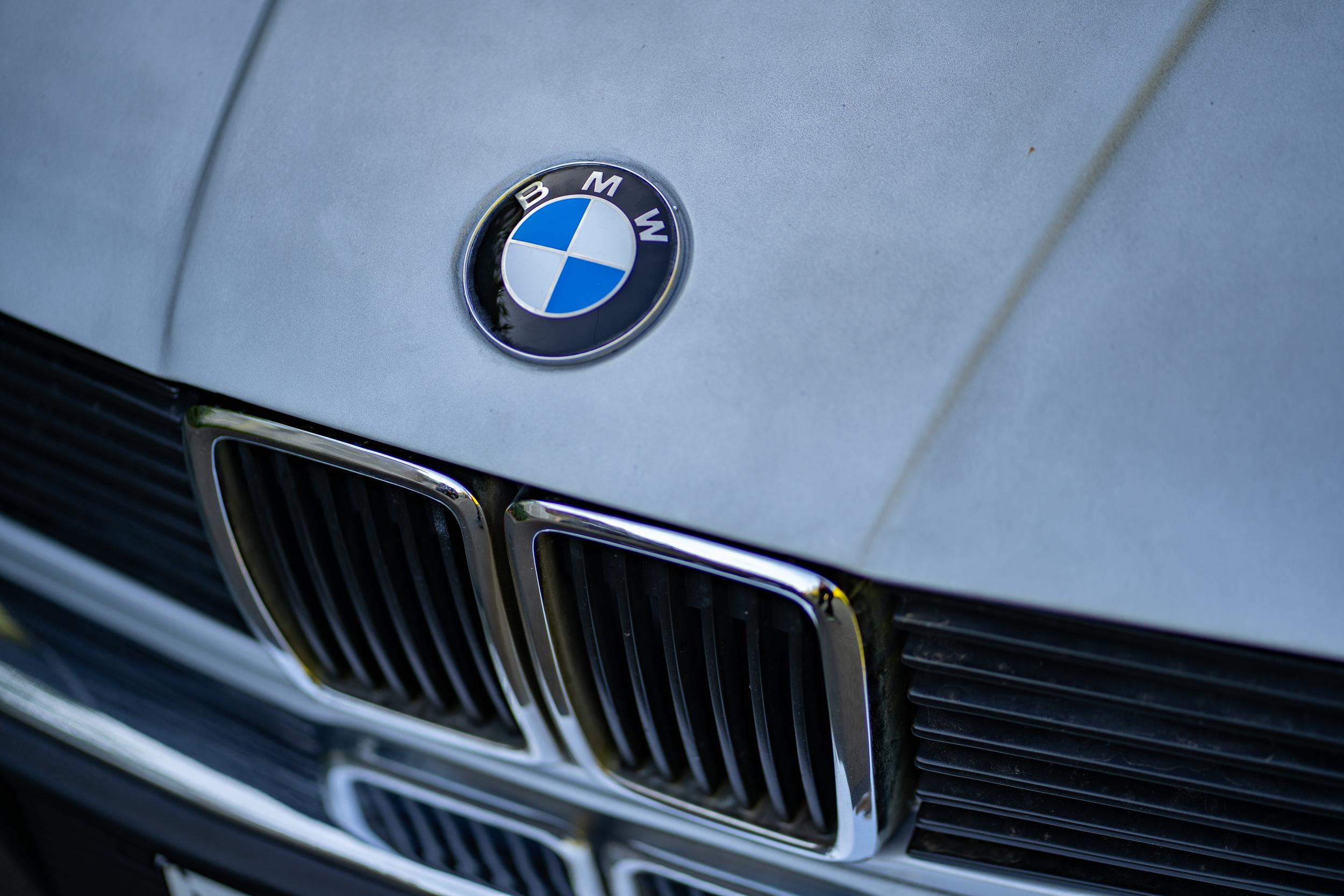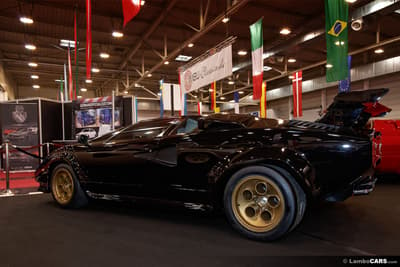In the captivating world of automobiles, few brands evoke as much passion and enthusiasm as BMW and Lamborghini. These are not just names but symbols of excellence, design prowess, and unparalleled performance. Rooted deep in their rich histories are tales of innovation, competition, and evolution. While BMW hails from Germany, emphasizing precision and elegance, Lamborghini is an Italian marvel, synonymous with flamboyance and power. Yet, as any discerning automobile aficionado would observe, there are times when their paths intersect, leading to design and engineering marvels. Through a comparative analysis of some of their iconic models, we uncover these intersections and what they signify for the automotive world.
BMW 507 and Lamborghini 350 GT
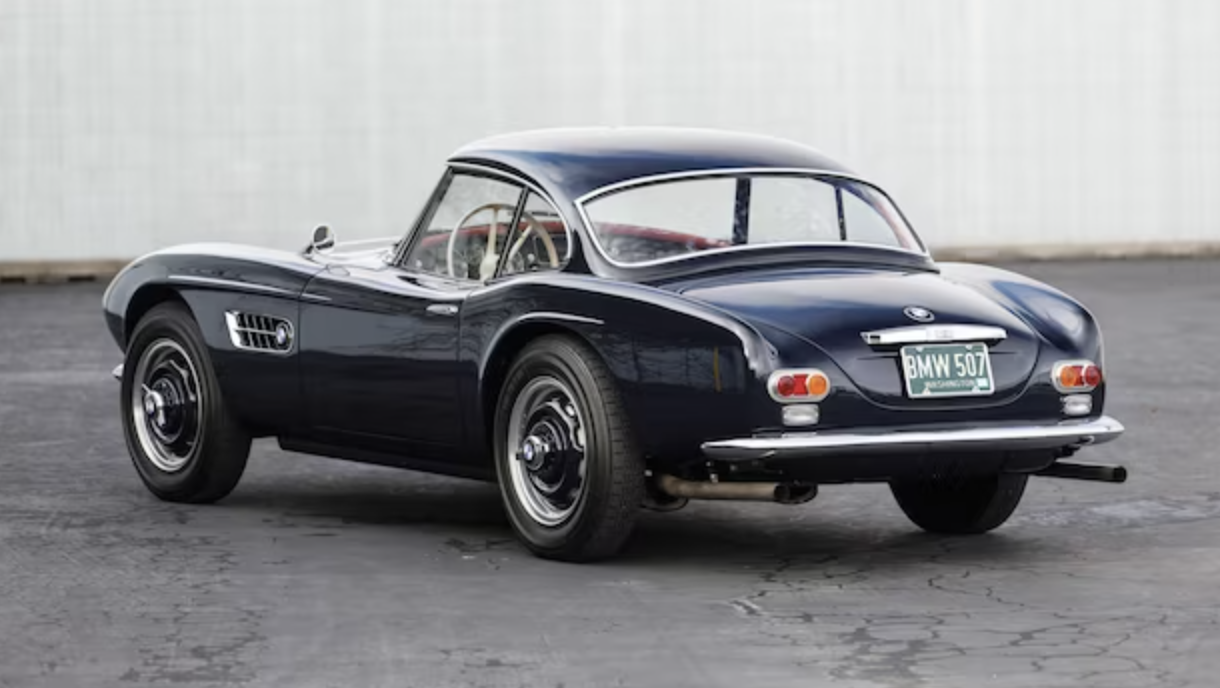
In the annals of automotive history, the BMW 507 and the Lamborghini 350 GT hold special places, representing foundational moments for their respective brands.
Introduced in the late 1950s, the BMW 507, with its curvaceous and elegant design, was a departure from BMW’s more sedate offerings of the era. Its elongated bonnet, subtle fender flares, and chrome detailing encapsulated a sense of luxury and sportiness. It wasn’t just a car; it was a statement of BMW’s intent to enter the high-end sports car market. Meanwhile, the Lamborghini 350 GT, unveiled in the mid-1960s, marked the inception of Lamborghini as a formidable competitor in the world of luxury sports cars.
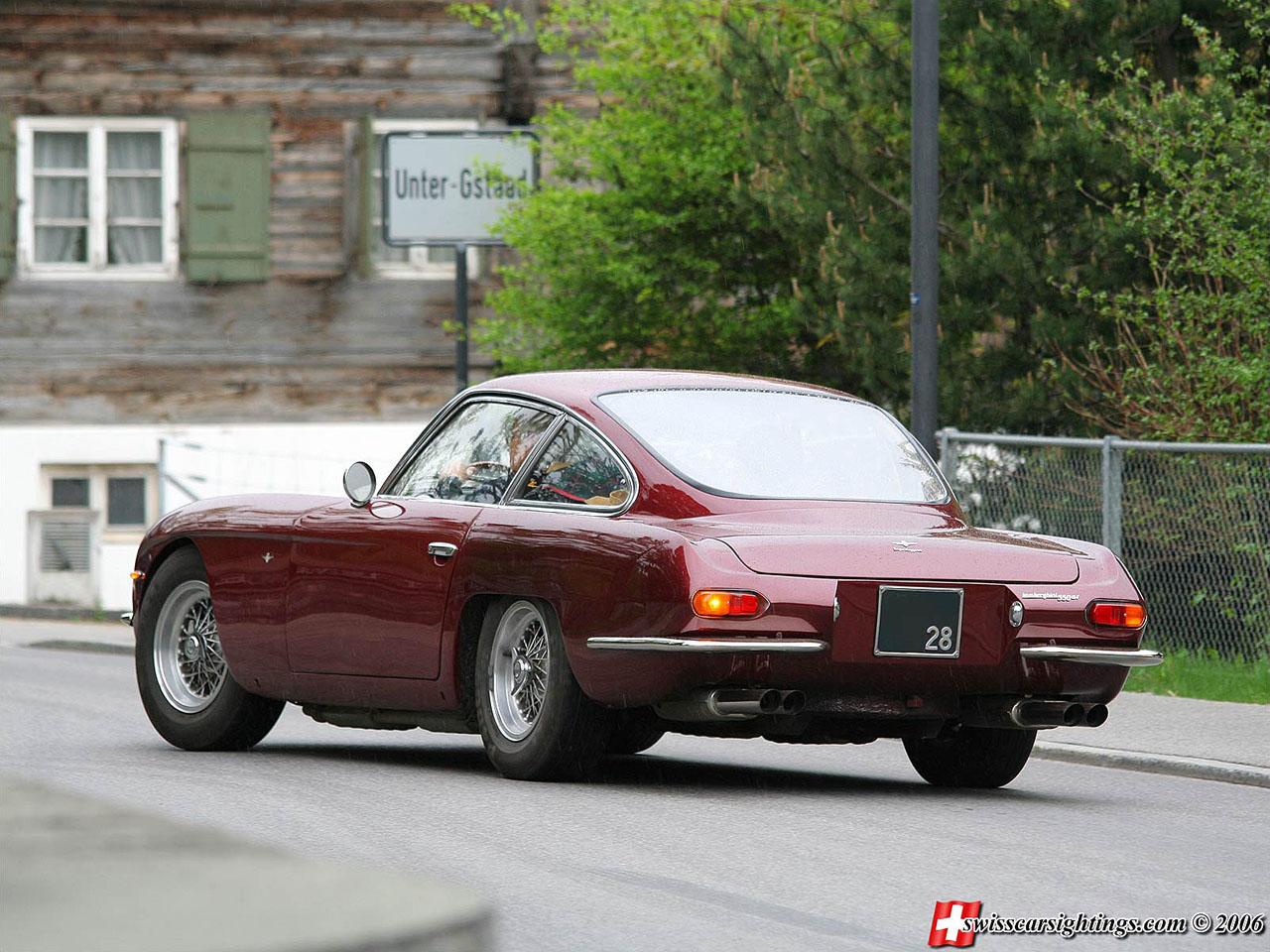
With its clean lines, long hood accommodating a V12 engine, and a more angular design compared to the 507, the 350 GT was Lamborghini’s answer to the established supercar elites. Both cars, while differing in their design approach, showcased the aspirations of their makers – BMW’s quest for elegance combined with sportiness and Lamborghini’s ambition to redefine grand touring. The 507 and 350 GT, in their own rights, set design and performance benchmarks that would influence the trajectories of their respective brands for decades to come.
| Specification | BMW 507 | Lamborghini 350 GT |
|---|---|---|
| Production Years | 1956-1959 | 1964-1966 |
| Engine | 3.2L V8 | 3.5L V12 |
| Power Output | 150 hp (112 kW) | 280 hp (209 kW) |
| Torque | Not widely specified | Not widely specified |
| Top Speed | Approximately 122 mph (196 km/h) | Approximately 158 mph (254 km/h) |
| Transmission | 4-speed manual | 5-speed manual |
| Drive Type | Rear-wheel drive | Rear-wheel drive |
| Wheelbase | 2,480 mm (97.6 in) | 2,550 mm (100.4 in) |
| Weight | Around 1,330 kg (2,932 lbs) | Approximately 1,450 kg (3,197 lbs) |
| Total Production | 252 | 120 |
BMW 6 Series (E24) and the Lamborghini Jarama GT 400

The BMW 6 Series (E24) and the Lamborghini Jarama GT 400 both emerged from a time when automotive design and engineering sought to capture a perfect blend of performance, luxury, and aesthetic appeal. These vehicles, while birthed from different philosophical cores and market aims, hold important places in the histories of their respective brands.
The BMW 6 Series (E24), introduced in the mid-1970s, heralded a new direction for BMW’s grand touring aspirations. Elegant yet sporty, the E24 boasted a long, flowing silhouette that accentuated its rear-wheel-drive proportions. The signature kidney grille, flanked by quad headlights, established an aggressive face that promised performance, while its elongated hood and short rear deck presented a classic coupe stance. Inside, the E24 prioritized driver ergonomics and luxury, encapsulating BMW’s commitment to delivering the ultimate driving experience. Functionality wasn’t sacrificed for form, as the car’s spacious cabin and attention to detail ensured it was as much about comfort as it was about speed.
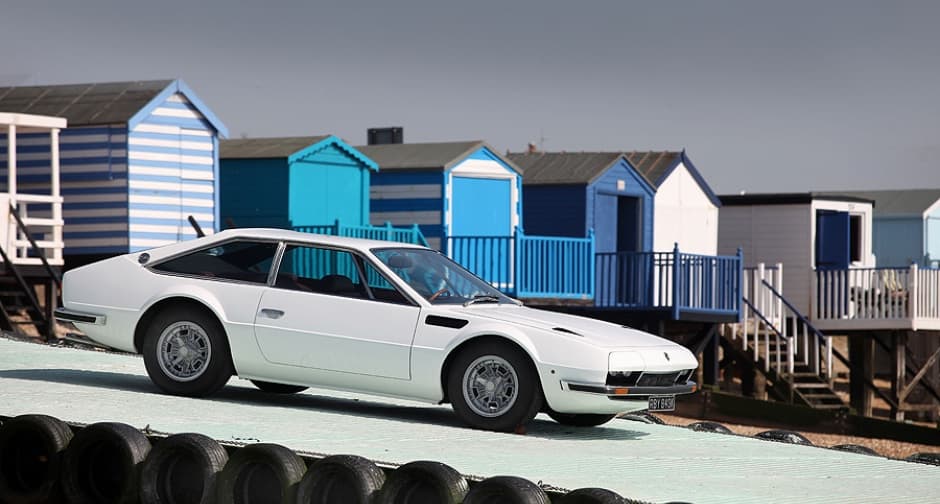
On the other side, the Lamborghini Jarama GT 400, which made its debut in the early 1970s, is a testament to Lamborghini’s attempt to fuse supercar performance with the practicality of a grand tourer. Though it isn’t as widely recognized as some of Lamborghini’s other models, the Jarama carried a distinctive design with its short, squared-off front end, and a cabin set quite forward, leaving a voluminous rear. It held a powerful V12 engine beneath its hood, cementing Lamborghini’s reputation for creating performance-oriented vehicles. While its angular lines and broader stance set it apart from the more svelte E24, the Jarama was an embodiment of Italian flair, combining muscular aesthetics with raw power.
| Specification | BMW 6 Series (E24) | Lamborghini Jarama GT 400 |
|---|---|---|
| Production Years | 1976-1989 | 1970-1973 |
| Engine Options | Range from 2.8L I6 to 3.5L I6 | 3.9L V12 |
| Power Output (range for BMW) | Approx. 184 hp (137 kW) for the 628CSi to 286 hp (213 kW) for the M635CSi | 350 hp (261 kW) |
| Torque | Varies by model | Approximately 290 lb-ft (393 N·m) |
| Top Speed | Varies, up to ~158 mph (254 km/h) for M635CSi | Approximately 162 mph (260 km/h) |
| Transmission | 4-speed manual, 5-speed manual, 3-speed auto, 4-speed auto (based on model/year) | 5-speed manual |
| Drive Type | Rear-wheel drive | Rear-wheel drive |
| Wheelbase | 2,625 mm (103.3 in) | 2,515 mm (99.0 in) |
| Weight | Ranges from 1,430 kg (3,153 lbs) to 1,560 kg (3,439 lbs) based on model | Approximately 1,650 kg (3,638 lbs) |
| Total Production (for Jarama total) | Over 86,000 (for the E24 series) | 328 (for both 400 GT and S versions) |
BMW M1 and Lamborghini Silhouette
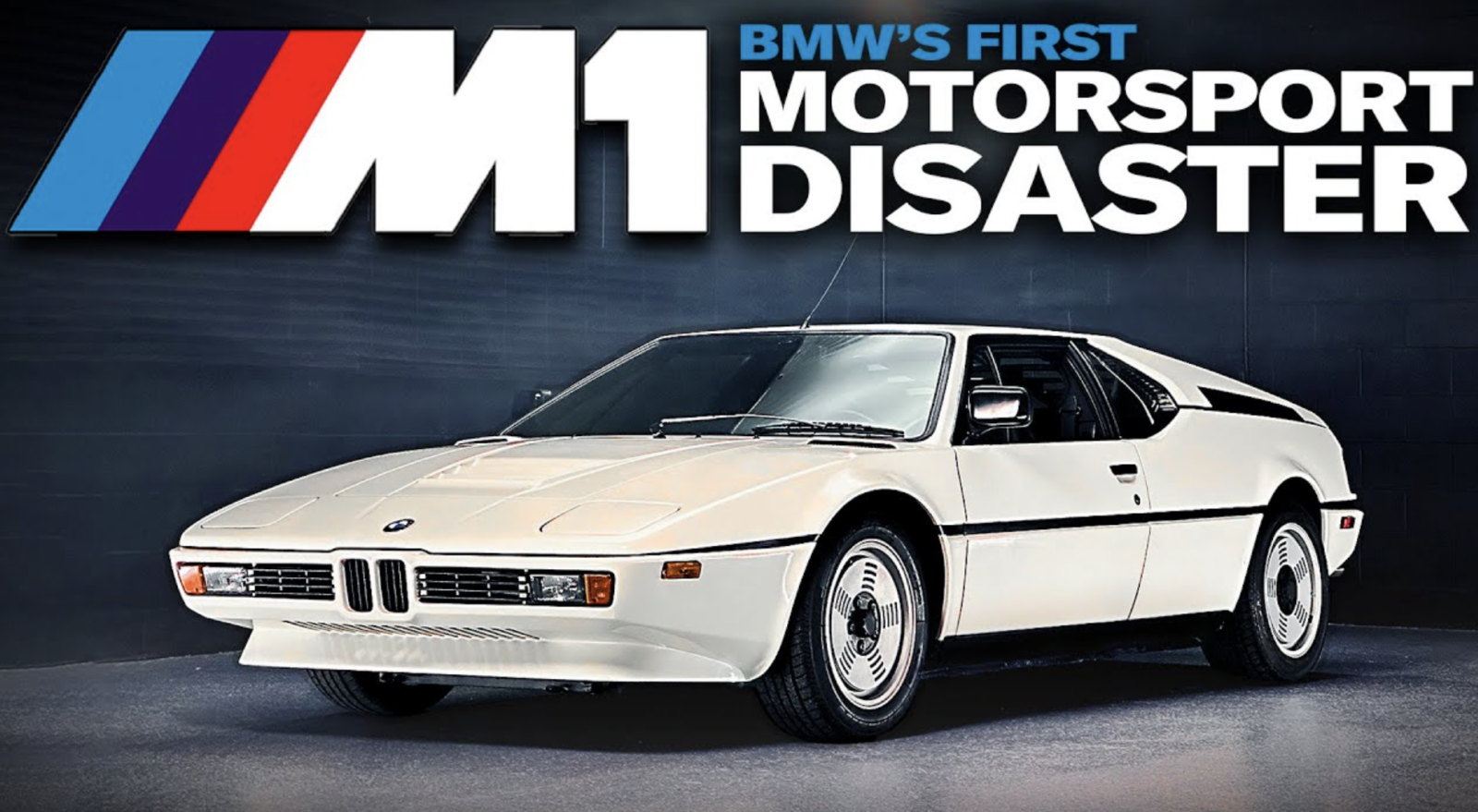
When one delves into the world of classic sports cars, the design parallels between the BMW M1 and the Lamborghini Silhouette are truly fascinating to explore.
The BMW M1, introduced in the late 1970s, presented a blend of German engineering finesse and Italian design flair. Its wedge-shaped profile, characterized by sharp lines and a low-slung stance, was undeniably reminiscent of the supercar aesthetics of its era. The mid-engine layout, prominent air intakes, and pop-up headlights further accentuated its sporty allure. The M1 was not just a car; it was BMW’s statement in the realm of sports cars, showcasing not only performance but also a design that could rival the best in the business.
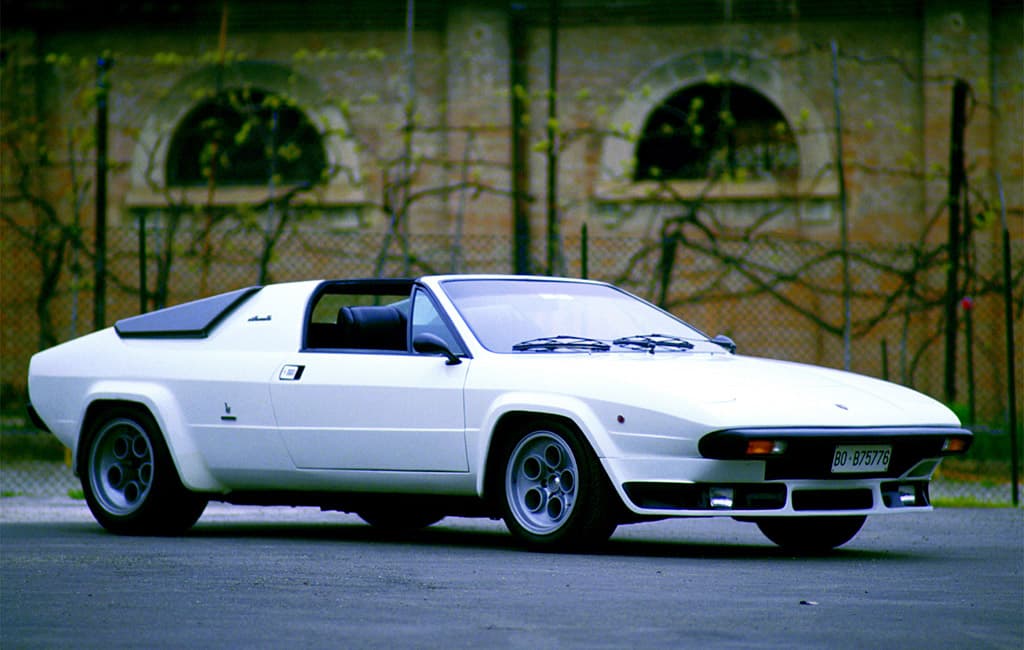
Around the same period, the Lamborghini Silhouette emerged, encapsulating the very essence of Italian supercar design. With its dramatic wedge shape, the Silhouette bore a striking resemblance to the M1. Its mid-engine configuration, a signature for Lamborghini, ensured that its design was not just about visual appeal but also about optimal weight distribution and performance dynamics. Like the M1, the Silhouette also sported pop-up headlights, a feature that was emblematic of sports cars during that era. The rear wheel arches, the glasshouse, and the overall stance seemed to echo a design philosophy that was also visible in the M1.
Comparing these two vehicles side by side, one can’t help but admire the congruencies in their design. While each car had its unique identity and characteristics, the overarching design principles were noticeably aligned. It’s as if the BMW M1 and Lamborghini Silhouette, though birthed from different origins, were kindred spirits in the realm of automotive design, converging on shared ideals during a golden age of sports car aesthetics.
| Specification | BMW M1 | Lamborghini Silhouette |
|---|---|---|
| Production Years | 1978-1981 | 1976-1979 |
| Engine | 3.5L M88/1 I6 | 3.0L V8 |
| Power Output | 277 hp (207 kW) (road version) | 266 hp (198 kW) |
| Torque | 243 lb-ft (330 N·m) | 201 lb-ft (273 N·m) |
| Top Speed | Approximately 160 mph (260 km/h) | Approximately 162 mph (260 km/h) |
| 0-60 mph Acceleration | About 5.6 seconds | Approx. 6.5 seconds |
| Transmission | 5-speed manual | 5-speed manual |
| Drive Type | Rear-wheel drive | Rear-wheel drive |
| Wheelbase | 2,600 mm (102.4 in) | 2,451 mm (96.5 in) |
| Weight | Around 1,300 kg (2,866 lbs) | Approximately 1,240 kg (2,734 lbs) |
| Total Production | 453 (including racing versions) | 54 |
BMW i8 and Lamborghini Huracan
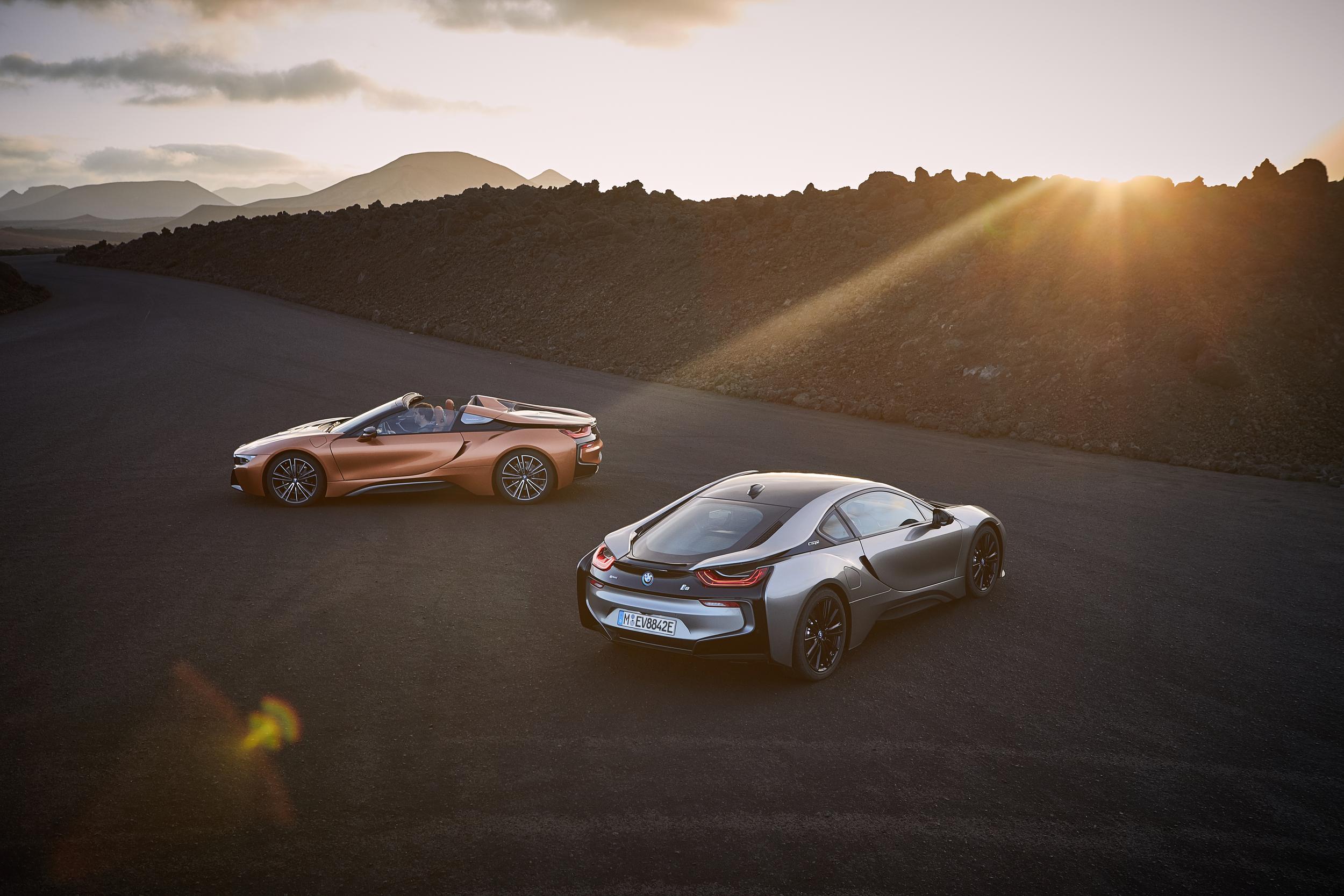
The BMW i8 and the Lamborghini Huracan, though hailing from distinct car cultures and philosophies, are captivating studies in modern supercar design. Their shared attributes and unique individualities provide a window into the dynamism and evolution of 21st-century automotive aesthetics.
BMW’s i8, while establishing itself as a pioneer in hybrid supercar technology, didn’t compromise on its aesthetics. Its appearance subtly hints at its hybrid nature, merging the characteristics of a futuristic machine with traditional sportiness. The car’s silhouette, with an elongated hood and a fastback rear, infuses aerodynamic performance into its visual vocabulary. Its sweeping, fluid lines, which undulate from the front to the back, aren’t just superficial details. They are meticulously calibrated, reducing air resistance, channeling airflow, and ensuring the car remains grounded at high speeds. The layering effect, especially visible in its rear design, where surfaces seem to fold over each other, helps guide the airflow and adds depth to its design.
The drama of the i8’s appearance is accentuated by its dihedral doors. These upward-opening marvels aren’t just for show; they aid in easier ingress and egress in tighter spaces, all the while resonating with the realm of exotic supercars.
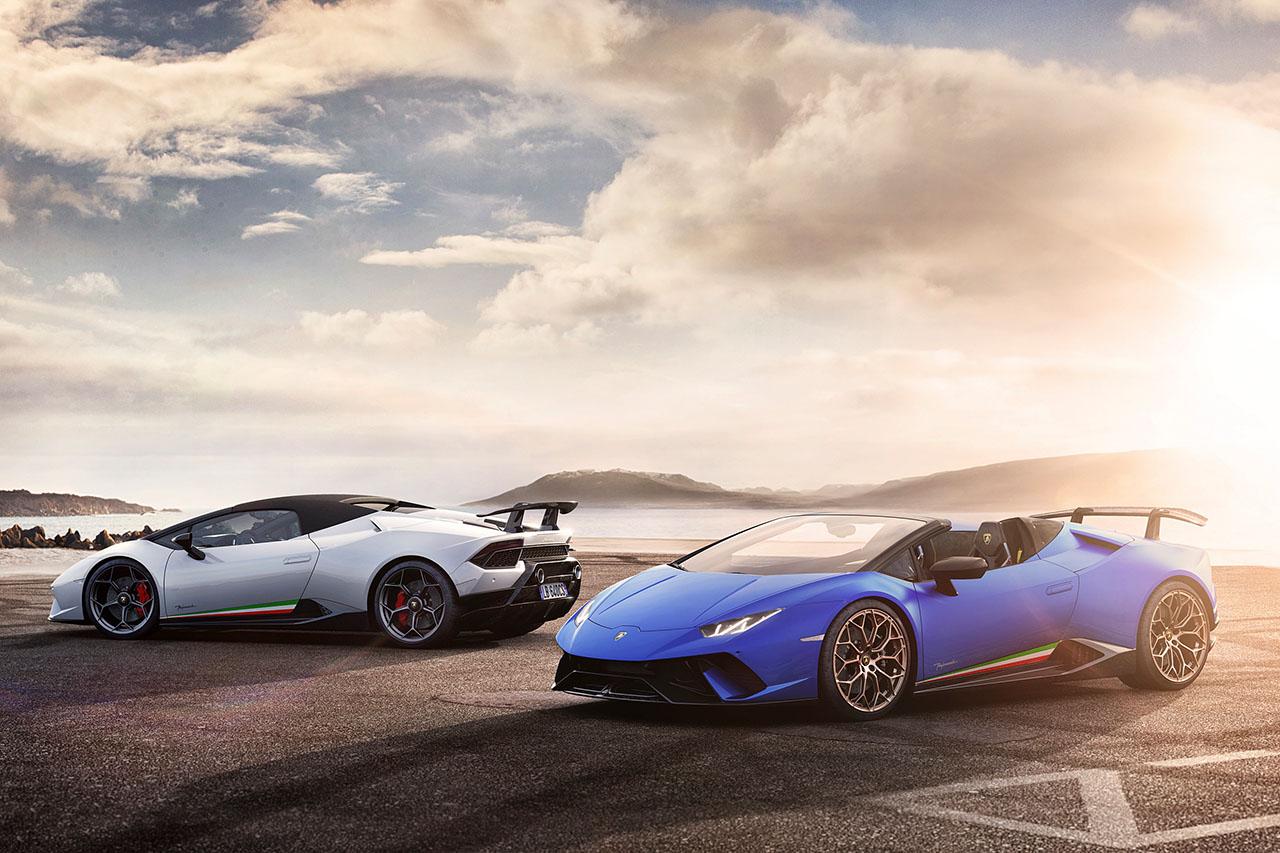
This resonance is felt even more profoundly when we shift our gaze to the Lamborghini Huracan. Lamborghinis, known for their theatrical and aggressive aesthetics, never shy away from making a statement. The Huracan stays true to this ethos. At the very first glance, it’s undeniably a Lamborghini – low-slung, wide, with an unmistakable predatory stance. Its hexagonal design theme, starting from its sharp, Y-shaped LED headlamps, echoing in its window lines, and even in the exhaust outlets, is a nod to the brand’s love for geometric precision.
The Huracan’s large air intakes, both at the front and the sides, are more than aesthetic adornments. They serve a functional role, providing critical cooling to the engine and brakes. But perhaps the most iconic design element, one that has become synonymous with Lamborghini’s identity, is its angular, sharp lines. These lines, which can be aggressive jabs or elongated slashes, contribute to the Huracan’s aerodynamic performance, ensuring stability, grip, and reduced drag.
If we delve deeper, the interiors of both cars further reflect their design ideologies. The i8’s cabin, bathed in ambient lighting, accentuates its modern, futuristic appeal. Ergonomically designed controls, high-quality materials, and a digital instrument cluster enhance its tech-forward appeal. In contrast, the Huracan’s cockpit feels more like the helm of a jet fighter. The start button hides beneath a red flip cover, the switches have a tactile, mechanical feel, and the central console tilts slightly towards the driver, making it a driver-centric space.
| Specification | BMW i8 | Lamborghini Huracán |
| Production Years | 2014-2020 | 2014-present |
| Engine | 1.5L turbocharged I3 + electric motor | 5.2L V10 |
| Power Output | Combined: 369 hp (275 kW) (in later models) | Varied by model, around 602 hp (449 kW) for LP 610-4 |
| Torque | 420 lb-ft (570 N·m) combined | Approx. 413 lb-ft (560 N·m) for LP 610-4 |
| Top Speed | 155 mph (250 km/h) electronically limited | Approx. 202 mph (325 km/h) for LP 610-4 |
| 0-60 mph Acceleration | Approx. 4.2 seconds | Approx. 2.8 seconds for LP 610-4 |
| Transmission | 6-speed automatic (gasoline engine) & 2-speed automatic (electric motor) | 7-speed dual-clutch |
| Drive Type | AWD (Front electric, rear gasoline) | AWD (for LP 610-4 version) |
| Wheelbase | 2,800 mm (110.2 in) | 2,620 mm (103.1 in) |
| Weight | Around 1,485 kg (3,274 lbs) | Approximately 1,422 kg (3,135 lbs) for LP 610-4 |
| Fuel Economy (combined) | Approx. 76 MPGe | Varies, less fuel efficient than i8 |
BMW X6 and Lamborghini Urus
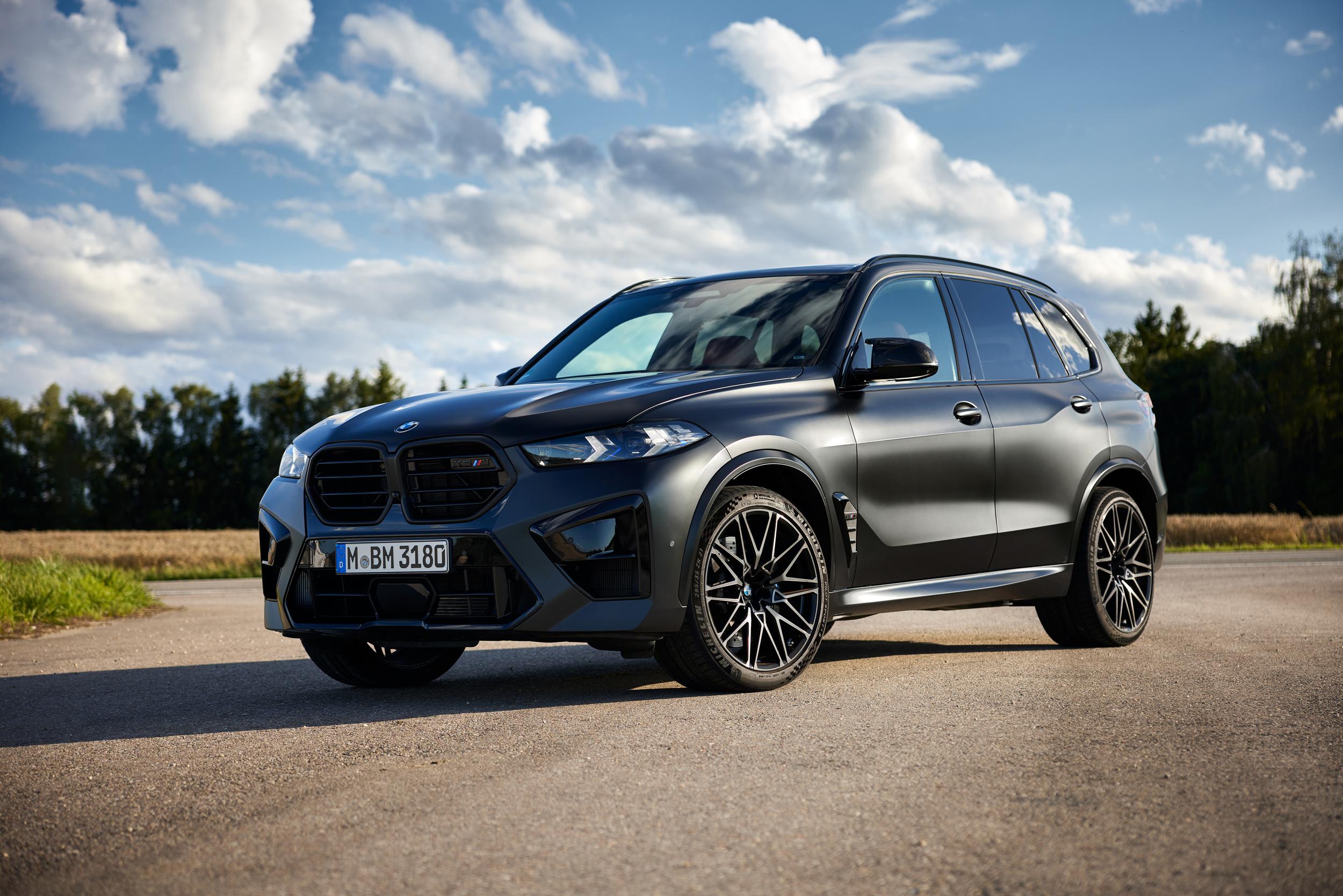
When traversing the evolving landscape of high-performance vehicles, the emergence of the sport SUV segment stands out as a noteworthy evolution. Two leading figures in this category, the BMW X6, and the Lamborghini Urus, encapsulate this trend with their unique blend of power, luxury, and unmistakably audacious design. While they emanate from very different origins, a dive into their aesthetics reveals fascinating overlaps and shared ideals.
BMW’s X6 can be perceived as a maverick in automotive design. Taking its cues from the traditional SUV shape but daring to meld it with the sleek, flowing lines of a coupe, it introduced a design genre of its own – the ‘Sports Activity Coupe’. This choice of design, though polarizing for some, exhibits a commitment to combine functionality with style. The pronounced front kidney grille, a hallmark of BMW, dominates the X6’s facade.
It’s not merely a stylistic element but facilitates enhanced cooling for the powerful engine lying beneath. The coupe-like sloping roofline, which seamlessly merges into the rear, isn’t just a design quirk; it contributes to the aerodynamic efficiency of the vehicle, ensuring that the X6 moves with the agility of a sports car while retaining the muscular stature of an SUV.
Turning attention to the Lamborghini Urus, one is immediately struck by its audacious presence. It’s as if the designers took the very essence of Lamborghini’s supercar DNA and seamlessly integrated it into the form of an SUV. The Urus is unabashedly aggressive in its design. The Y-shaped headlights, a nod to Lamborghini’s design tradition, sit atop large air intakes, emphasizing the car’s performance intentions. Its chiseled sides and pronounced wheel arches encapsulate its athletic prowess, and much like the X6, every design element is purpose-driven.
The rear, with its integrated diffuser and sizeable hexagonal exhaust outlets, isn’t just for visual appeal; it aids in aerodynamics and performance. And, akin to the X6’s sloping rear, the Urus also showcases a tapering roofline, providing that sporty silhouette and aerodynamic benefit.
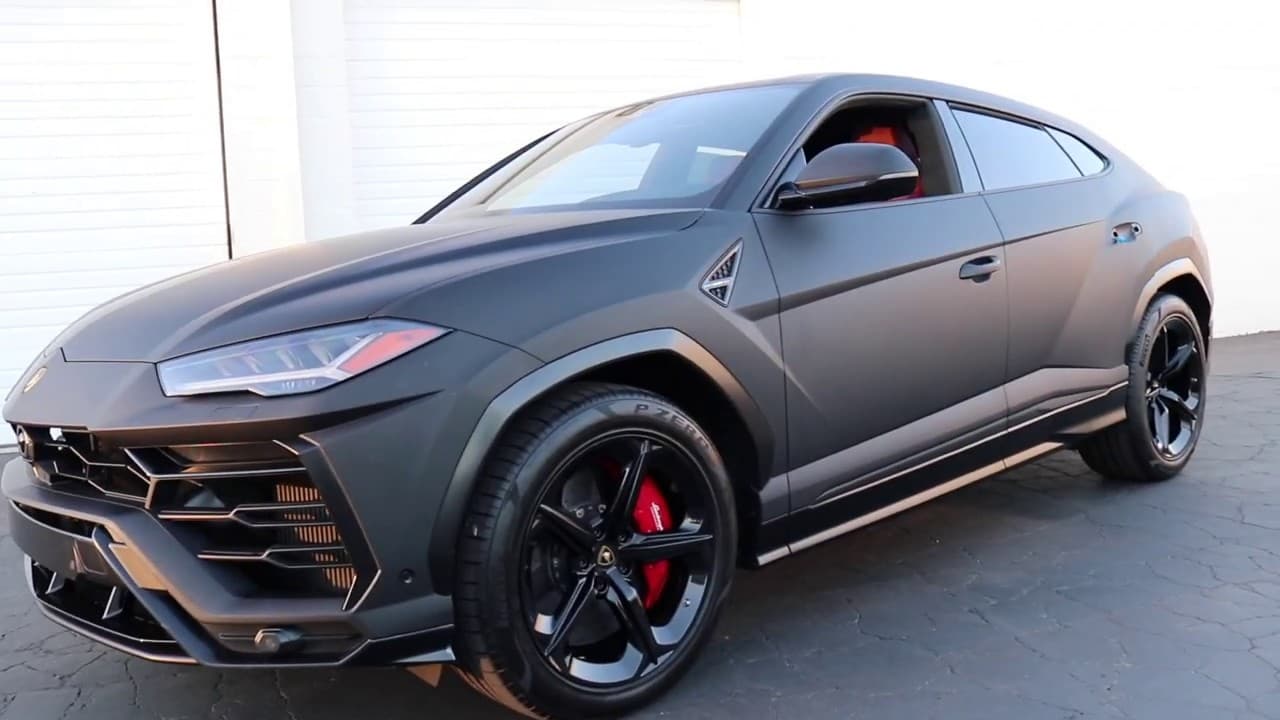
The interiors of both vehicles further narrate their design stories. Inside the X6, there’s a blend of opulence and driver-centric ergonomics. The infotainment system, digital instrument cluster, and premium materials used throughout reflect BMW’s commitment to luxury and technological advancement.
On the other hand, the Urus’s cabin echoes the exterior’s aggression. Angular designs, hexagonal motifs, and a cockpit-inspired driver’s space highlight its supercar roots. However, despite these differing approaches, both interiors emphasize the marriage of performance and luxury, albeit in their distinctive styles.
The underpinnings of both the X6 and Urus are geared towards performance. While the X6 draws from BMW’s rich heritage of creating driver-oriented vehicles, the Urus borrows heavily from Lamborghini’s supercar lineage, ensuring that despite their bulk, both SUVs deliver exhilarating driving experiences.
| Specification | BMW X6 (2020) | Lamborghini Urus (2020) |
| Production Years | 2008-present | 2018-present |
| Engine Options | Multiple, including: | 4.0L twin-turbocharged V8 |
| – 3.0L turbocharged I6 (sDrive40i, xDrive40i) | ||
| – 4.4L twin-turbocharged V8 (M50i) | ||
| Power Output | – I6: 335 hp (250 kW) | 641 hp (478 kW) |
| – V8: 523 hp (390 kW) | ||
| Torque | – I6: 330 lb-ft (447 N·m) | 627 lb-ft (850 N·m) |
| – V8: 553 lb-ft (750 N·m) | ||
| Top Speed | Varies by model, up to ~177 mph (285 km/h) for M50i | Approx. 190 mph (305 km/h) |
| 0-60 mph Acceleration | – I6: Approx. 5.3 seconds | Approx. 3.6 seconds |
| – V8: Approx. 4.1 seconds | ||
| Transmission | 8-speed automatic | 8-speed automatic |
| Drive Type | AWD | AWD |
| Wheelbase | 2,975 mm (117.1 in) | 3,003 mm (118.2 in) |
| Weight | Varies by model, approx. 2,185–2,390 kg (4,812–5,269 lbs) | Approx. 2,200 kg (4,850 lbs) |
BMW XM and Lamborghini Urus
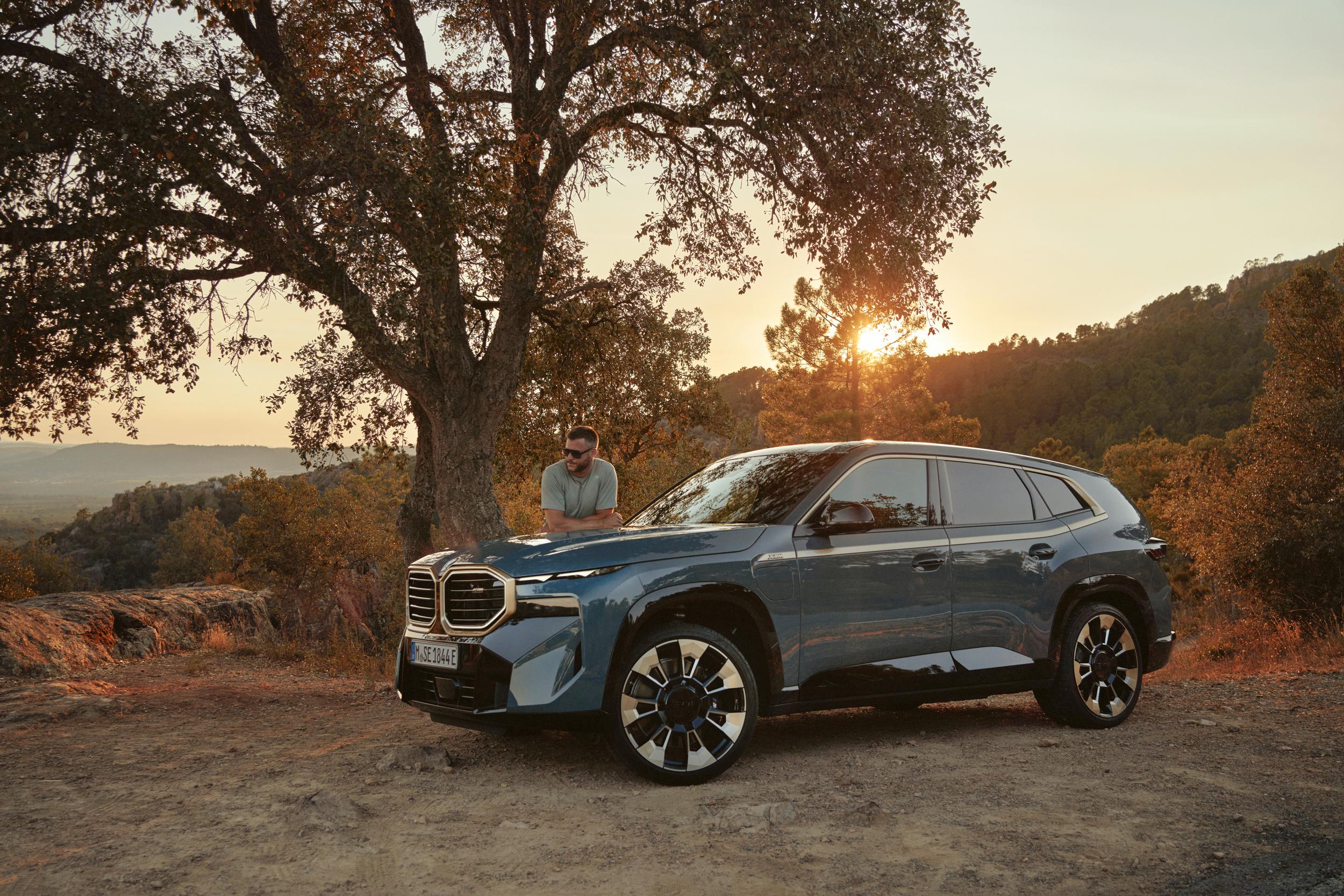
The evolution of luxury sport SUVs has reached a fascinating juncture with the introduction of models like the BMW XM and the Lamborghini Urus. These vehicles, while encapsulating their brand’s rich legacies, have paved the way for an entirely new conversation about what it means to blend raw power, opulence, and avant-garde design. Drawing from their distinct narratives, there is a harmonious dance of similarities and contrasts that emerges when one delves into their design and ethos.
The BMW XM, even at first glance, makes a bold statement. This high-performance SUV carries the distinction of being the M division’s first standalone model in decades. It carries forth the brand’s design language but with audacious overtones. Its large, vertically oriented kidney grille, which has been a topic of debate among enthusiasts, serves as both a nod to BMW’s history and a daring leap into its future.
This grille, besides being a visual anchor, facilitates cooling for the XM’s powerful engine. The vehicle’s profile is adorned with intricate lines and creases that guide the observer’s eyes along its length, hinting at its aerodynamic prowess. Character lines on the sides and the coupe-like tapering of the roof resonate with the design cues seen in the X6, emphasizing sportiness while maintaining its grandeur.
Meanwhile, the Lamborghini Urus, even though it has been discussed earlier, deserves a refreshed exploration in this context. The Urus confidently carries Lamborghini’s supercar spirit into the SUV realm. Its razor-sharp lines, aggressive front fascia with large air intakes, and the iconic Y-shaped headlight design immediately identify its pedigree.
Much like the XM’s grille, the front design of the Urus isn’t just for aesthetic appeal; it serves a performance-driven purpose. Its bold wheel arches house large wheels, emphasizing its off-road and on-road capabilities. The tapering roofline, much like the XM, enhances aerodynamics and gives the Urus its unmistakably sporty silhouette.
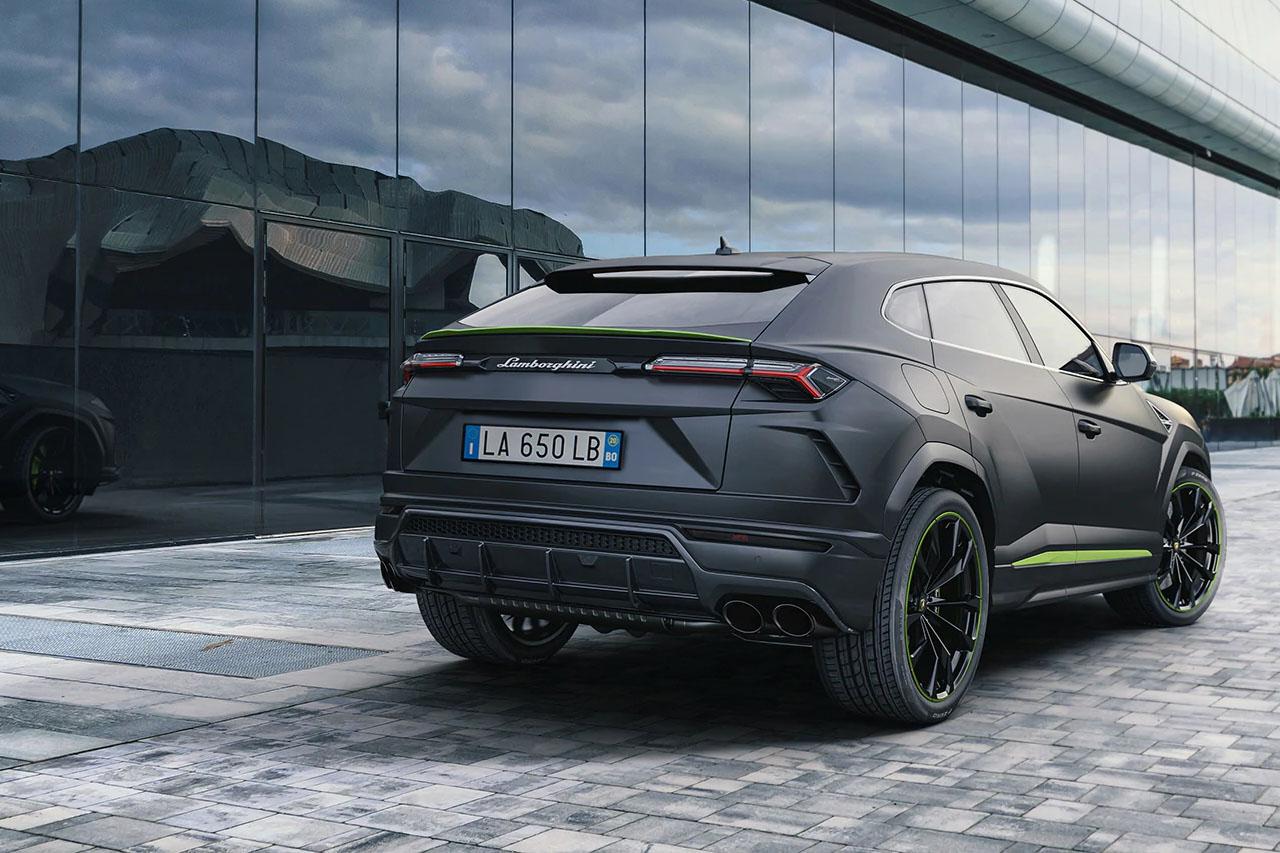
The interiors of both these vehicles further reflect the meticulous attention to detail and the quest for luxury. The BMW XM offers a cocoon of opulence with its high-quality materials, intricate stitching patterns, and a slew of technological features aimed at enhancing the driver and passenger experience. Its focus on both tactile and visual luxury showcases BMW’s dedication to creating an interior space that complements its exterior bravado.
The Urus, similarly, doesn’t shy away from flaunting its luxury. The hexagonal and Y-shaped motifs find their way into the cabin, echoing the exterior design language. High-quality materials, tactile controls, and a driver-centric layout underscore its supercar lineage, ensuring that even within, the Urus feels every bit a Lamborghini.
While their powertrains and performance metrics may diverge, with the BMW XM flaunting its hybrid prowess and the Urus celebrating its combustion engine’s roar, their design philosophies converge in many areas. Both these vehicles emphasize a blend of function and form, aerodynamic efficiency with muscular aesthetics, and a commitment to luxury without compromising on performance.
| Specification | BMW XM | Lamborghini Urus |
| Production Years | 2022-present | 2018-present |
| Engine | 4.4L twin-turbocharged V8 + electric motor | 4.0L twin-turbocharged V8 |
| Power Output | Combined: Approx. 750 hp (560 kW) | 641 hp (478 kW) |
| Torque | Combined: Approx. 737 lb-ft (1,000 N·m) | 627 lb-ft (850 N·m) |
Driving into the Future: An Ongoing Rivalry and Mutual Admiration
The world of automobiles is richer because of brands like BMW and Lamborghini. They challenge each other, yet in doing so, they also uplift the industry standards, setting new benchmarks in design, performance, and innovation. For any enthusiast, the journey of tracking the evolution of these brands is both exhilarating and enlightening. Their intersections in design philosophy and performance metrics underscore a larger narrative – one of relentless pursuit of excellence. As the automotive landscape continues to shift, with electric mobility and sustainability becoming paramount, it’s exciting to ponder how these two giants will redefine themselves while continuing to inspire and awe their legion of fans worldwide.

